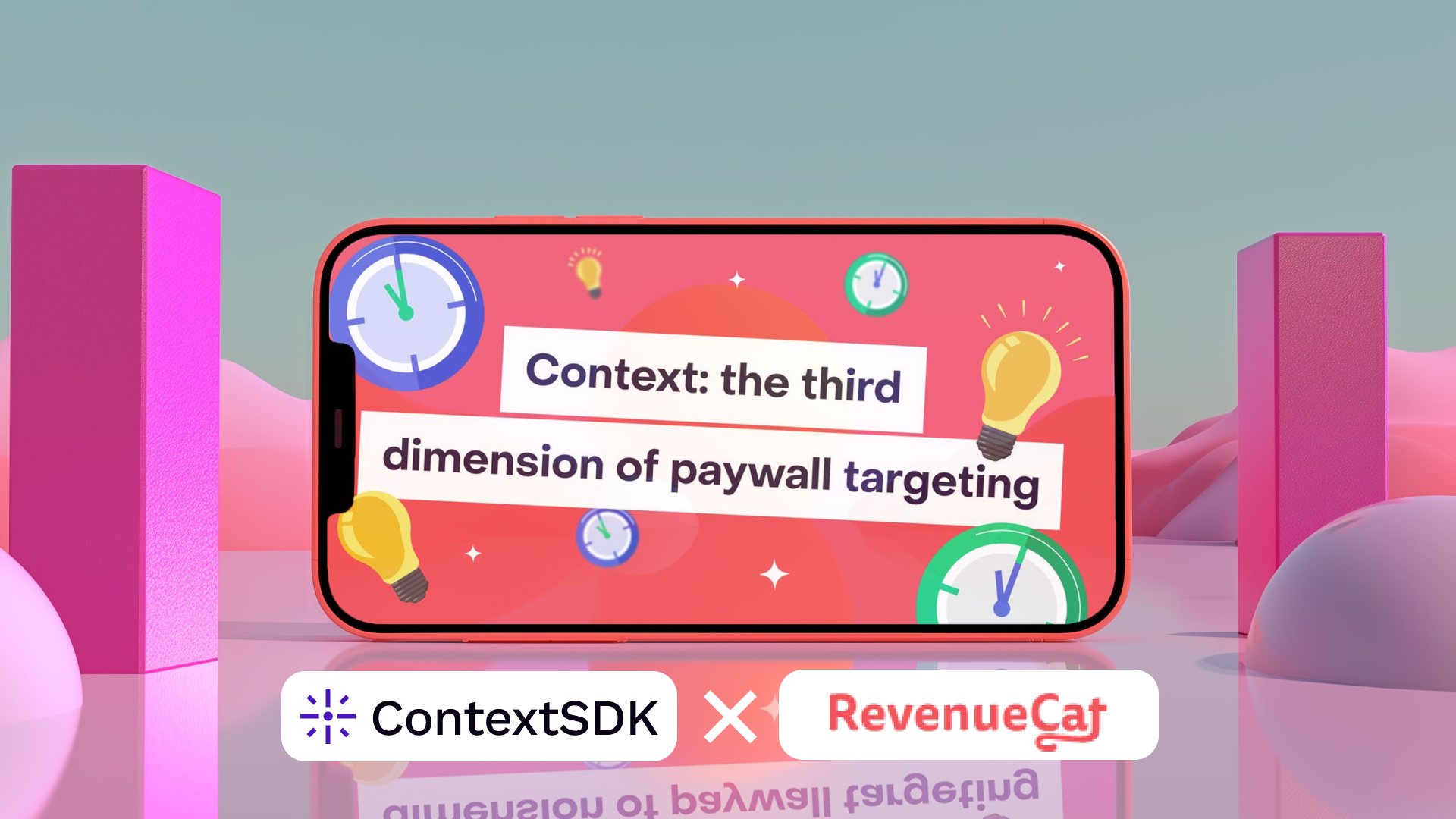Installing Third-Party SDKs in iOS Apps: A Step by Step Guide


Introduction
Installing third-party SDKs is the fastest way to add powerful features to your iOS app without months of development. Whether you need payments, analytics, social features, or intelligent user engagement, SDKs provide enterprise-level functionality with streamlined integration.
This guide covers everything you need to install and configure third-party SDKs in your iOS projects efficiently.
What Are Third-Party SDKs for iOS?
iOS SDKs are pre-built frameworks that extend your app's capabilities:
- Payment processing (Stripe, Square, PayPal)
- Analytics & tracking (Firebase, Mixpanel, Amplitude)
- Social media (Facebook SDK, Twitter SDK)
- Maps & location (Google Maps, Mapbox)
- Push notifications (OneSignal, Firebase)
- User engagement (Context-aware SDKs, A/B testing)
Benefits: faster development, reduced maintenance, and access to specialized features that would take months to build.
Prerequisites
Before installing any SDK:
- ✅ Xcode installed (latest version recommended)
- ✅ Active iOS project with bundle identifier
- ✅ Check SDK's minimum iOS version requirements
- ✅ Get API keys/credentials from SDK provider
- ✅ Review SDK documentation
Step 1: Choose the Right SDK
Key evaluation factors:
- iOS compatibility - Minimum version vs. your target audience
- App size impact - Framework size affects download time
- Performance - Memory usage and battery impact
- Privacy compliance - App Store guidelines
- Documentation quality - Clear guides save time
- Company stability - Long-term support
Step 2: Choose Installation Method
Swift Package Manager (Recommended)
Apple's built-in solution is cleanest:
- File → Add Package Dependencies
- Enter SDK's repository URL
- Select version and add to target
CocoaPods
Popular for extensive library support:
ruby
# Podfile
platform :ios, '12.0'
target 'YourApp' do
pod 'Firebase/Analytics'
pod 'Stripe'
end
Run: pod install (use .xcworkspace afterward)
Manual Installation
Download and drag frameworks into Xcode project.
Step 3: Configure Info.plist
Add required SDK configuration:
xml
<!-- API Keys -->
<key>APIKey</key>
<string>your-api-key-here</string>
<!-- URL schemes for callbacks -->
<key>CFBundleURLTypes</key>
<array>
<dict>
<key>CFBundleURLSchemes</key>
<array>
<string>your-custom-scheme</string>
</array>
</dict>
</array>
<!-- Privacy descriptions -->
<key>NSLocationWhenInUseUsageDescription</key>
<string>This app uses location for personalized experiences.</string>
Step 4: Initialize in AppDelegate
Most SDKs need initialization at app launch:
swift
import Firebase
import FacebookCore
@main
class AppDelegate: UIResponder, UIApplicationDelegate {
func application(_ application: UIApplication,
didFinishLaunchingWithOptions launchOptions: [UIApplication.LaunchOptionsKey: Any]?) -> Bool {
// Initialize SDKs
FirebaseApp.configure()
ApplicationDelegate.shared.application(application, didFinishLaunchingWithOptions: launchOptions)
StripeAPI.defaultPublishableKey = "your-key"
return true
}
}
Step 5: Handle Permissions
Request permissions when needed:
swift
import CoreLocation
import UserNotifications
// Location permission
let locationManager = CLLocationManager()
locationManager.requestWhenInUseAuthorization()
// Push notifications
UNUserNotificationCenter.current().requestAuthorization(options: [.alert, .sound]) { granted, _ in
if granted {
DispatchQueue.main.async {
UIApplication.shared.registerForRemoteNotifications()
}
}
}
Step 6: Use SDK Features
Start implementing functionality:
swift
// Analytics example
Analytics.logEvent("purchase", parameters: [
"item_name": "Cool Product",
"value": 29.99
])
// Payment example
let paymentIntent = PaymentIntent(amount: 2000, currency: "usd")
StripeAPI.confirmPayment(paymentIntent) { result in
// Handle payment result
}
Common Issues & Quick Fixes
"Framework not found" error → Check framework is added to target and search paths
App crashes on launch → Verify SDK initialization in AppDelegate and API keys
Features not working → Confirm Info.plist setup and permissions granted
Slow build times → Use Swift Package Manager or dynamic frameworks
App Store rejection → Review privacy practices and usage descriptions
Best Practices
- Read official docs first - Saves debugging time
- Use Swift Package Manager - Cleanest dependency management
- Test on real devices - Simulator may behave differently
- Monitor performance - Check memory/CPU impact
- Keep SDKs updated - Get security fixes and features
- Handle SDK failures gracefully - App should work even if SDK fails
Privacy & App Store Guidelines
iOS 17+ Privacy Manifests: Ensure SDKs provide updated privacy manifests
App Tracking Transparency: For cross-app tracking SDKs:
swift
import AppTrackingTransparency
ATTrackingManager.requestTrackingAuthorization { status in
switch status {
case .authorized:
// Initialize tracking features
break
default:
// Handle limited functionality
break
}
}
Elevate Your App with ContextSDK
Speaking of powerful third-party SDKs, let us introduce you to ContextSDK – the next generation of mobile intelligence that transforms iOS app engagement through real-world context awareness.
What Makes ContextSDK Different
While traditional SDKs add features, ContextSDK adds intelligence. It uses on-device machine learning to analyze over 200 mobile signals and understand what users are doing in the real world – commuting, relaxing, working, or being active – within seconds of app launch.
Key Benefits:
- Perfect timing: Deliver content when users are most receptive
- Privacy-first: All processing on-device, zero personal data leaves phone
- Proven results: ~20% increase in user lifetime value
- Clean integration: Follows the same patterns you just learned
Real-World Applications
- E-commerce: Show offers when users are in shopping contexts
- Health & Fitness: Suggest workouts when users are in appropriate contexts
- Content Apps: Deliver articles when users have time to engage
- Entertainment: Present features when users are in leisure contexts
Advanced Features
ContextPush: Send push notifications at optimal moments based on real-world context for higher engagement rates.
ContextDecision: Make intelligent decisions about when to show in-app messages and content based on user receptivity.
Works with Your Stack
ContextSDK enhances your existing iOS infrastructure:
- OneSignal: Enhanced notification timing
- Firebase: Context-aware messaging
- Branch: Improved deep linking
- AppsFlyer: Context-enhanced attribution
Privacy-First Design
- All analysis happens on-device using Core ML
- Zero personal data collected or transmitted
- Full App Store privacy compliance
- Builds user trust through transparency
The future of iOS engagement is context-aware. ContextSDK understands not just what users do in your app, but what they're doing in real life – enabling truly intelligent experiences that feel magical rather than intrusive.
Ready to revolutionize your iOS app? Visit ContextSDK.com to explore documentation and discover how context-aware technology can transform your user experience while maintaining the highest privacy standards.






